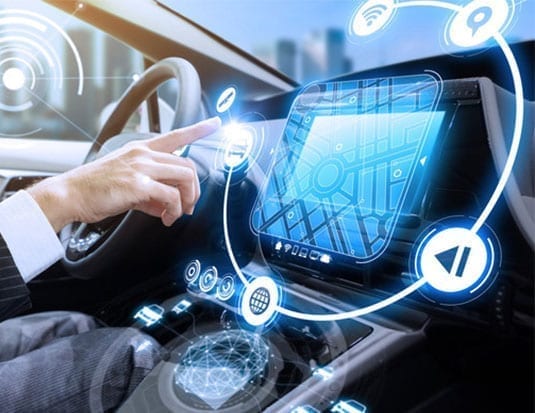Connected car makers should acquire or invest in technology companies as technology becomes a standard and desired feature.
As the connected car sector grows, smartphone and gaming companies are looking into developing advanced in-vehicle technologies. Automakers and Tier I companies are also partnering with third-party Artificial Intelligence (AI)-based assistants or creating their own native intelligent assistants to refashion and transcend existing user experience (UX). The rising demand for personalization is also promoting multi-sided platforms like marketplace with contextual services. Frost & Sullivan predict that in-vehicle marketplace will be available in about 80% of premium vehicles sold by 2020 and that new generations of this platform will leverage customer data and be customized to each vehicle occupant.
“With commutes becoming longer, the number of purchases made on the move has increased. The likelihood of in-car ads converting to purchases of products and services is especially high in automated vehicles, which makes marketplace a scalable model,” said Suhas Gurumurthy, Mobility Senior Research Analyst at Frost & Sullivan. “With more than 60% of consumers willing to share data, OEMs and data consumers will have significant opportunities to generate recurring revenues. They will be looking to invest in advanced data analytics companies, apply AI algorithms, identify new use cases, and build applications on top of platforms to enhance services.”
Frost & Sullivan shared their recent analysis. Global Connected Car Market Outlook, 2019, which outlines how companies will align future strategies with the connected, autonomous, shared, and electric (CASE) model. The company also presents the key players in the automotive OS, navigation, IoT and cybersecurity, while highlighting the possible growth opportunities for OEMs and Tier I companies.
“Connected car makers will be eager to build strategic partnerships with telecom providers and communication module makers to augment on-road safety and offer in-vehicle, data-rich services,” noted Gurumurthy. “Flexible business models such as choice of network for consumers will further improve customer retention and revenue generation.”
Connected car makers can also find additional revenue opportunities by:
- Acquiring or investing heavily in technology companies that also follow the CASE model;
- Reducing development cycles to introduce new vehicle features faster;
- Focusing on growth regions, like China, Europe, and Germany, where mobility is being tested, undergoing transformations and delivering connectivity solutions for retails and fleets;
- Implementing firmware over-the-air (FOTA) updates to promote new features and on-demand feature updates;
- Acquiring third-party service providers or building capability in-house to develop new telematics services;
- Utilizing the cloud platform capabilities, like AI and machine learning (ML) to evolve services; and
- Enabling seamless connectivity of all devices and delivering connected services, such as car-to-home automation.



